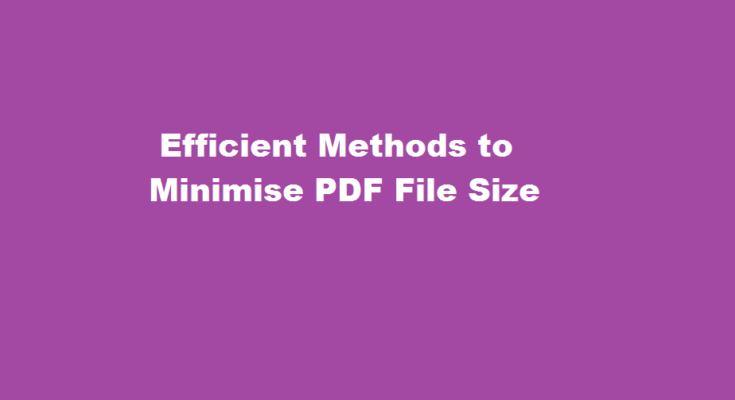Introduction
PDF (Portable Document Format) files are widely used for sharing and preserving digital documents. However, large PDF file sizes can be challenging to handle, resulting in slow uploads, limited storage capacity, and difficulties in sharing files. This article aims to provide valuable insights and practical tips on reducing PDF file size while maintaining document quality. By employing the techniques described below, you can optimise PDFs for various purposes, enhance workflow efficiency, and minimise storage requirements.
Optimising Images
One of the primary contributors to large PDF file sizes is high-resolution images. By optimising the images within your PDF, you can significantly reduce the file size. Use image editing software or online tools to resize and compress images without sacrificing visual quality. Experiment with different compression levels to strike a balance between size reduction and image clarity. Additionally, consider converting images to more space-efficient formats like JPEG, which is suitable for photographs, or SVG (Scalable Vector Graphics) for line art and illustrations.
Adjusting Font Usage
Fonts can add considerable bulk to a PDF file, especially if they are embedded. When creating a PDF, limit the number of fonts used and avoid embedding unnecessary fonts. If your PDF contains text in different fonts, consider converting them to standard fonts such as Arial or Times New Roman, which are widely available on most systems. This strategy eliminates the need to embed custom fonts and reduces the overall file size.
Compressing PDF Content
Several software tools and online services specialise in compressing PDF files. These tools employ advanced compression algorithms to reduce the size of PDFs without compromising quality. Use them to compress your PDF files before sharing or archiving them. Be cautious not to select excessive compression, as it may cause artefacts or degradation in text and image quality. Strike a balance between size reduction and maintaining readability to ensure the compressed PDF remains useful and legible.
Removing Unnecessary Elements
PDF files can contain various elements that contribute to their size but may not be essential for the document’s purpose. Evaluate your PDF and remove any unnecessary elements like annotations, bookmarks, or thumbnails that are not required for the document’s core content. Additionally, consider removing hidden data, metadata, or duplicate images that may be present within the file. By eliminating these superfluous elements, you can significantly reduce the PDF file size.
Breaking Large PDFs into Smaller Files
If your PDF file is exceptionally large and cannot be compressed sufficiently, consider splitting it into smaller, more manageable files. Divide the document into logical sections or chapters and save them as individual PDF files. This approach not only reduces the overall file size but also improves accessibility and ease of navigation for end-users. When splitting PDFs, ensure proper labelling and organisation to maintain the coherence and clarity of the content.
Frequently Asked Questions
How does reducing PDF size work?
It will resample and compress images and subset-embed fonts that were left embedded. It also compresses document structure and cleans up elements such as invalid bookmarks. If your file size is already as small as possible, the Reduced File Size command will have no effect on the size of your document.
What affects the size of a PDF?
What creates a large PDF file? PDFs are usually noticeably large when a few specific things happen. First, PDFs can be oversized because one or more fonts have been embedded and subset inside that specific PDF file. In fact, adding a single font to a PDF document can sometimes increase the file size substantially.
Conclusion
Minimising the size of PDF files is crucial for efficient document management and seamless file sharing. By implementing the techniques mentioned above, you can significantly reduce PDF file sizes without sacrificing document quality. Remember to optimise images, adjust font usage, compress PDF content, remove unnecessary elements, and split large PDFs when necessary. A balanced approach is crucial, as excessively compressed files may compromise readability and overall usability. Always test the output files before sharing or archiving to ensure they meet your requirements. With these methods at your disposal, you can streamline your PDF workflow, optimise storage utilisation, and enhance collaboration by sharing smaller, more accessible PDF documents.
Read Also : Enhancing The Beauty of Your Pictures Unveiling Techniques and Tips



